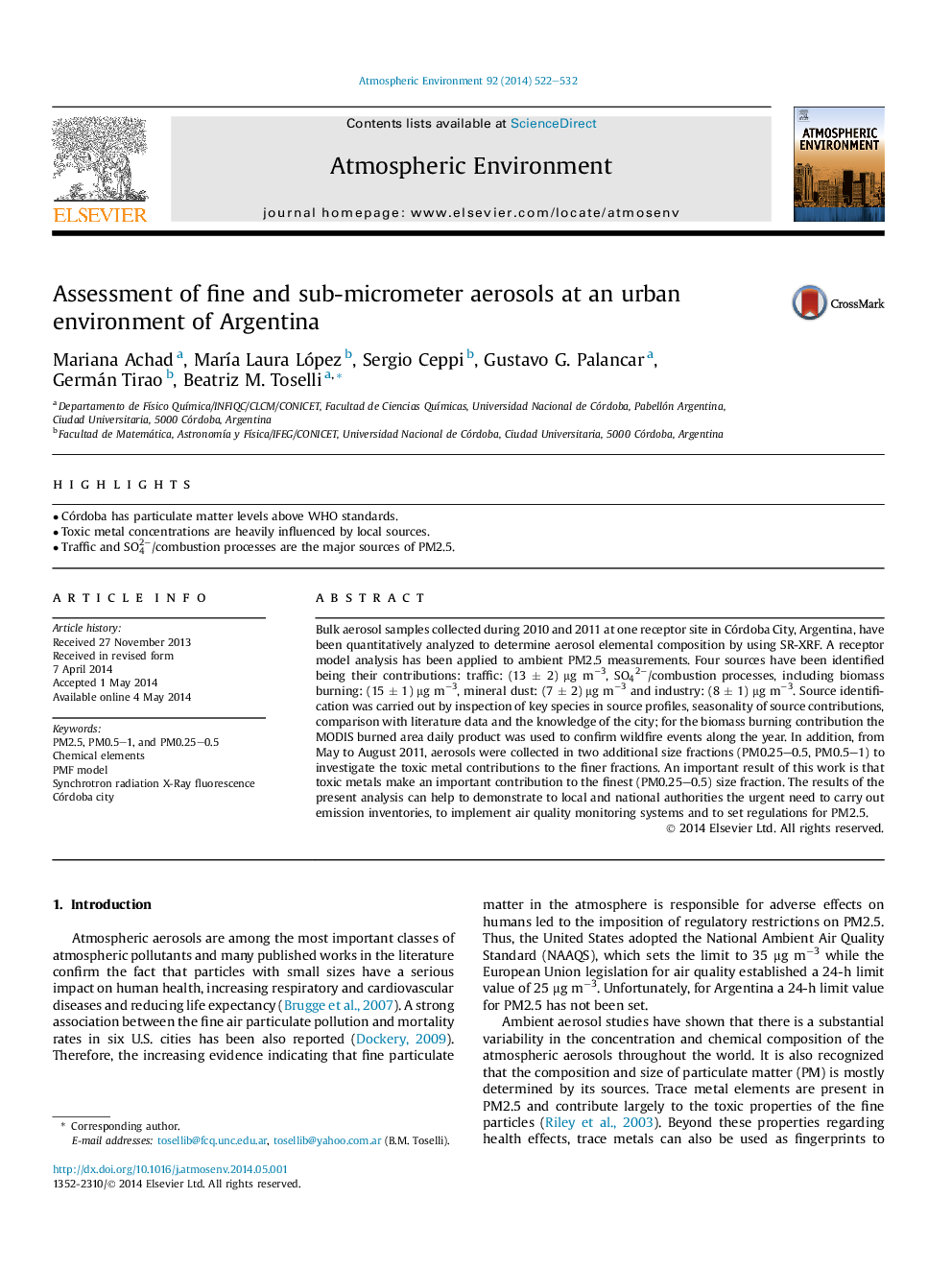| Article ID | Journal | Published Year | Pages | File Type |
|---|---|---|---|---|
| 6339425 | Atmospheric Environment | 2014 | 11 Pages |
Abstract
Bulk aerosol samples collected during 2010 and 2011 at one receptor site in Córdoba City, Argentina, have been quantitatively analyzed to determine aerosol elemental composition by using SR-XRF. A receptor model analysis has been applied to ambient PM2.5 measurements. Four sources have been identified being their contributions: traffic: (13 ± 2) μg mâ3, SO42â/combustion processes, including biomass burning: (15 ± 1) μg mâ3, mineral dust: (7 ± 2) μg mâ3 and industry: (8 ± 1) μg mâ3. Source identification was carried out by inspection of key species in source profiles, seasonality of source contributions, comparison with literature data and the knowledge of the city; for the biomass burning contribution the MODIS burned area daily product was used to confirm wildfire events along the year. In addition, from May to August 2011, aerosols were collected in two additional size fractions (PM0.25-0.5, PM0.5-1) to investigate the toxic metal contributions to the finer fractions. An important result of this work is that toxic metals make an important contribution to the finest (PM0.25-0.5) size fraction. The results of the present analysis can help to demonstrate to local and national authorities the urgent need to carry out emission inventories, to implement air quality monitoring systems and to set regulations for PM2.5.
Related Topics
Physical Sciences and Engineering
Earth and Planetary Sciences
Atmospheric Science
Authors
Mariana Achad, MarÃa Laura López, Sergio Ceppi, Gustavo G. Palancar, Germán Tirao, Beatriz M. Toselli,
